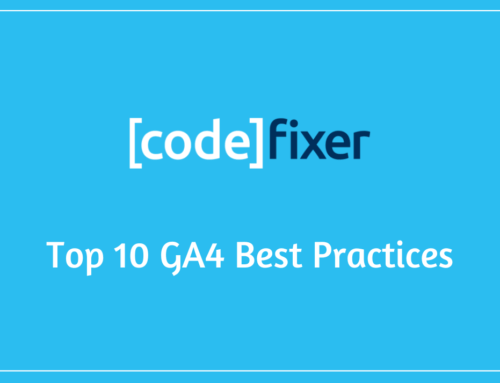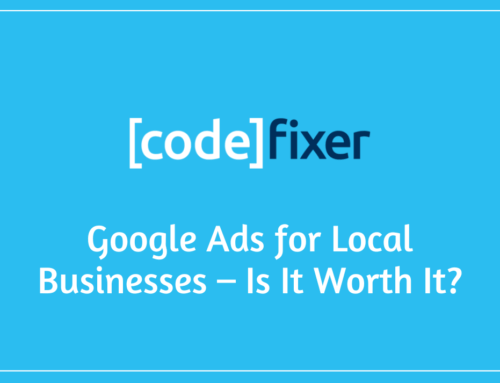AI tools like ChatGPT are increasingly becoming a go-to choice across marketing and everyday life. With 51% of marketers using AI to optimise content, understanding how to use the likes of ChatGPT correctly is a must.
What is ChatGPT?
Though this blog can apply to any of the many AI writing tools, ChatGPT is by far the most popular, holding 81.67% of the global market share for AI chatbots.
Created by OpenAI in November 2022, ChatGPT is a conversational AI tool designed to generate human-like responses to written prompts. It can help with everything from simple questions to more complex problems. Because it’s very easy to use, ChatGPT has become widely adopted within marketing and SEO, to simplify and streamline many content creation tasks.
How to Use ChatGPT for Content Creation
Below are seven foolproof ways we’ve found ChatGPT to be helpful for getting the best content results for our clients.
- Brainstorming blog and content ideas
- Creating structured content briefs
- Writing first drafts faster
- Editing or rewriting existing content
- Creating meta titles and descriptions
- Generating social media copy
- Repurposing content into different formats
Let’s break each one down so you can see exactly how they work. But before we do, it’s important to note that we’ve found the paid version of ChatGPT is far better at following instructions, providing more nuance, and for longer chats.
1. Brainstorming Blog and Content Ideas
We’ve all hit that wall where the ideas just stop flowing (or even start to begin with!) ChatGPT is brilliant at helping you get past that block and can act as the perfect jumping-off point. Feed it some context, like your target audience and what you’re trying to achieve with the content, and let it generate a list of topics in seconds.
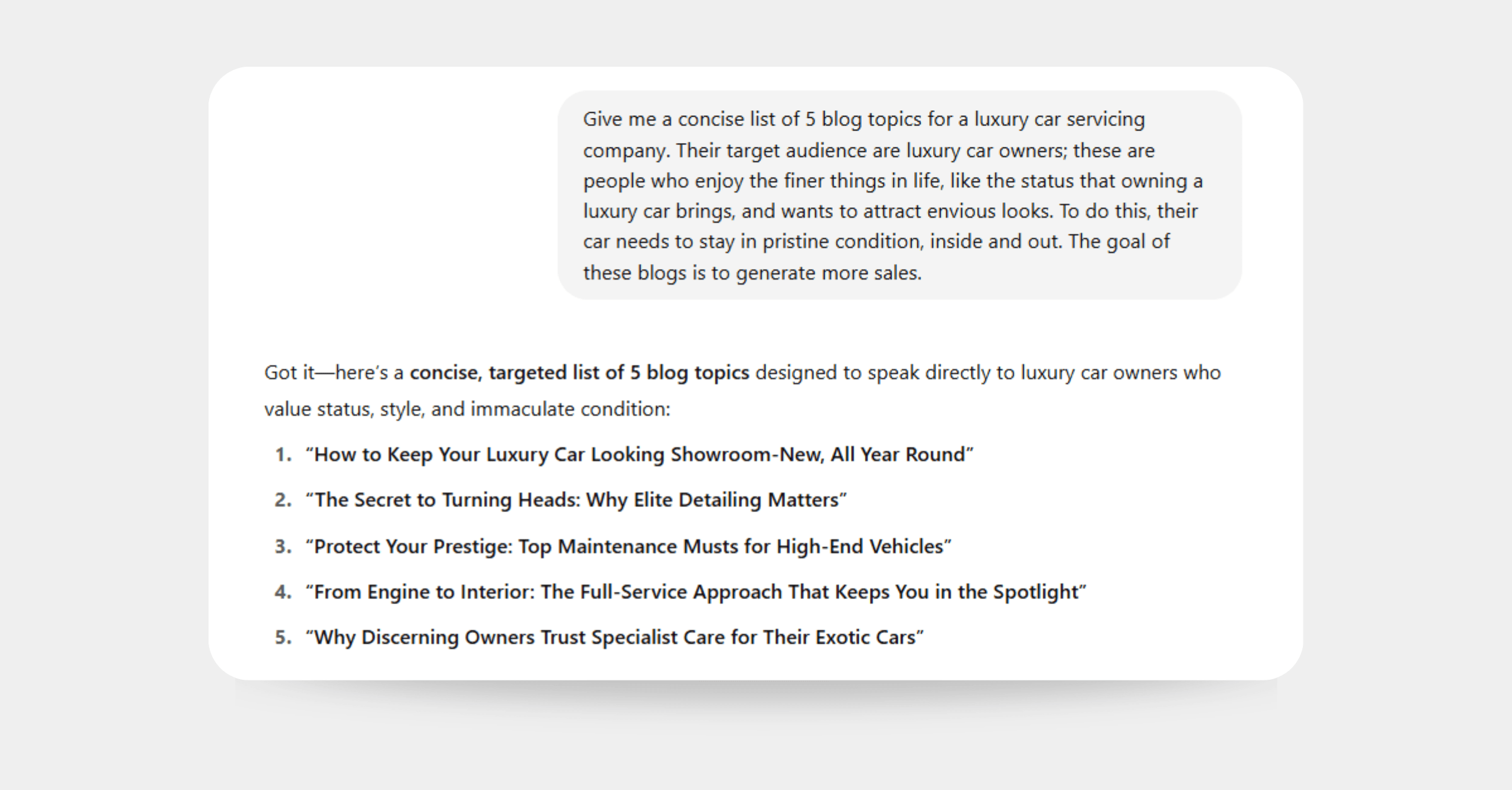
It won’t replace your instincts, especially when it comes to truly understanding your target audience’s needs. But, it’s a start and can even open you to different perspectives you might not have thought of. From there, you can use SEO tools and manual Google searches to check if people are searching for the topic.
2. Creating Structured Content Briefs
Once you’ve a list of topics, it can be difficult to know how best to structure your content. Is it better to answer the topic right away? Is the content going to be used for a blog post or a whitepaper?
After doing your research and checking what’s actually ranking on Google for the topic, you’ll be in a better position to see what format works best. Then, you can use ChatGPT to help you build detailed outlines – complete with suggested headings, subheadings, and key points.
Not only does it help quicken things when you’re writing content yourself, but it prevents structure inconsistencies when multiple writers are working on the same project.
3. Writing First Drafts Faster
Even with a solid content brief, writing from scratch can often start with sitting in front of a blank screen, watching the cursor flicker impatiently. ChatGPT is fantastic for breaking that blank page syndrome and getting that rough first draft out of the way.
When we use ChatGPT to help us create an initial draft, we find inserting each section of the content brief one bit at a time often gives us better results. We’ve tested inserting the entire outline in one go but more often than not, it leads to our instructions and parameters being ignored and misinformation.
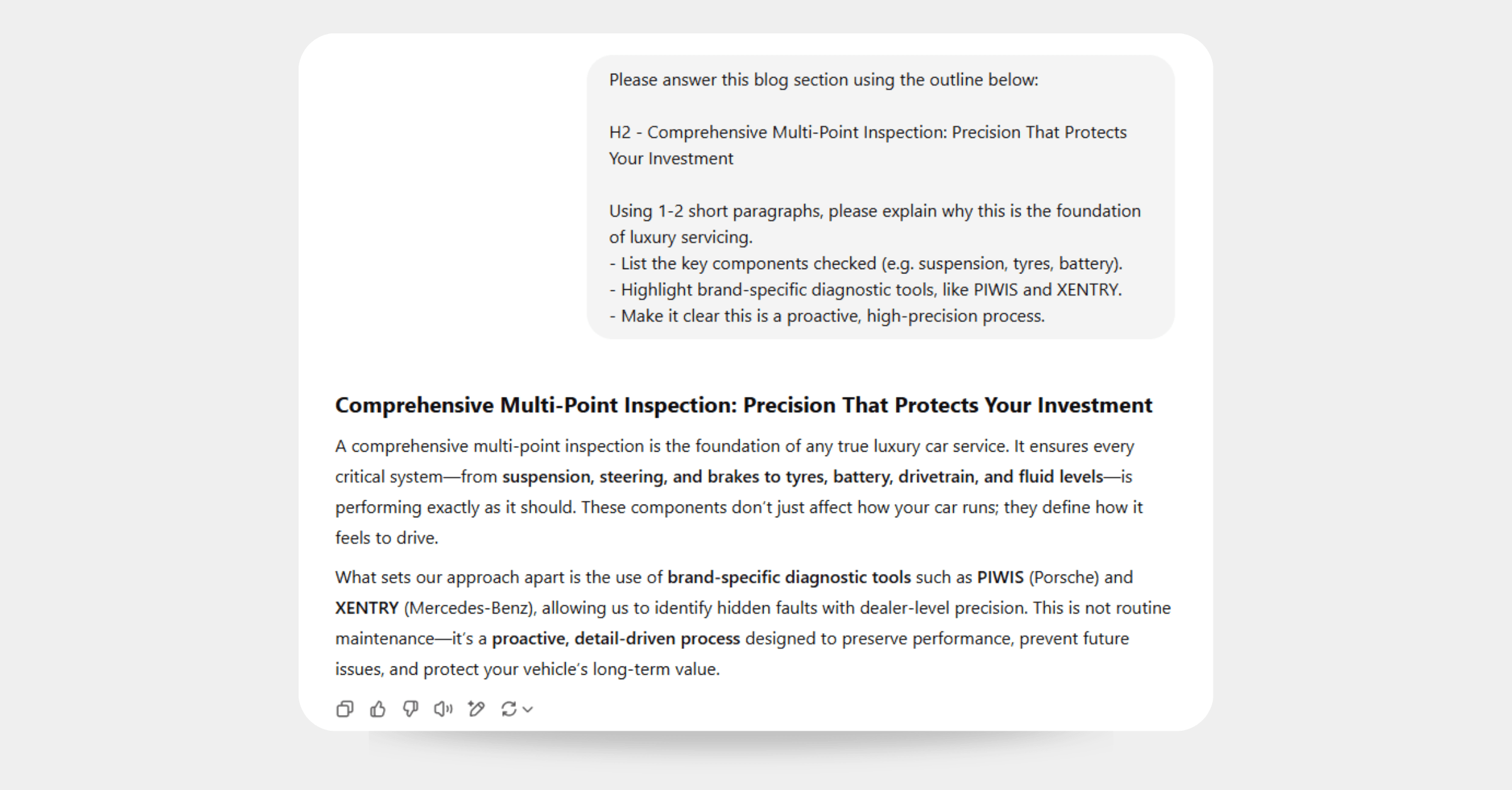
4. Editing and Rewriting Existing Content
After you’ve created a first rough draft with ChatGPT, and reworked the content yourself, ChatGPT can be used again for editing. AI is great for stripping back content that’s too long or fleshing out parts that are lacking. If your vocabulary is not the best, ChatGPT can help with that as well (and even teach you a thing or two!)
Simply put your edited draft back into the chat and ask it to critique and revise your content, even down to a sentence level if you want.
5. Creating Title Tags and Meta Descriptions
Writing meta titles and descriptions can be awkward as you try to include important keywords and benefits, while staying within the short, yet optimal, character lengths. ChatGPT can quickly generate multiple variations based on your blog content, keywords, and character limits.
You’ll still want to tweak them to make sure they hit the right tone and avoid sounding too robotic or ‘clickbaity’. Plus, ChatGPT often forgets how to count if you want to get your metadata within recommended character limits.
Nevertheless, it takes the grunt work out of the process and helps you focus on the final polish.
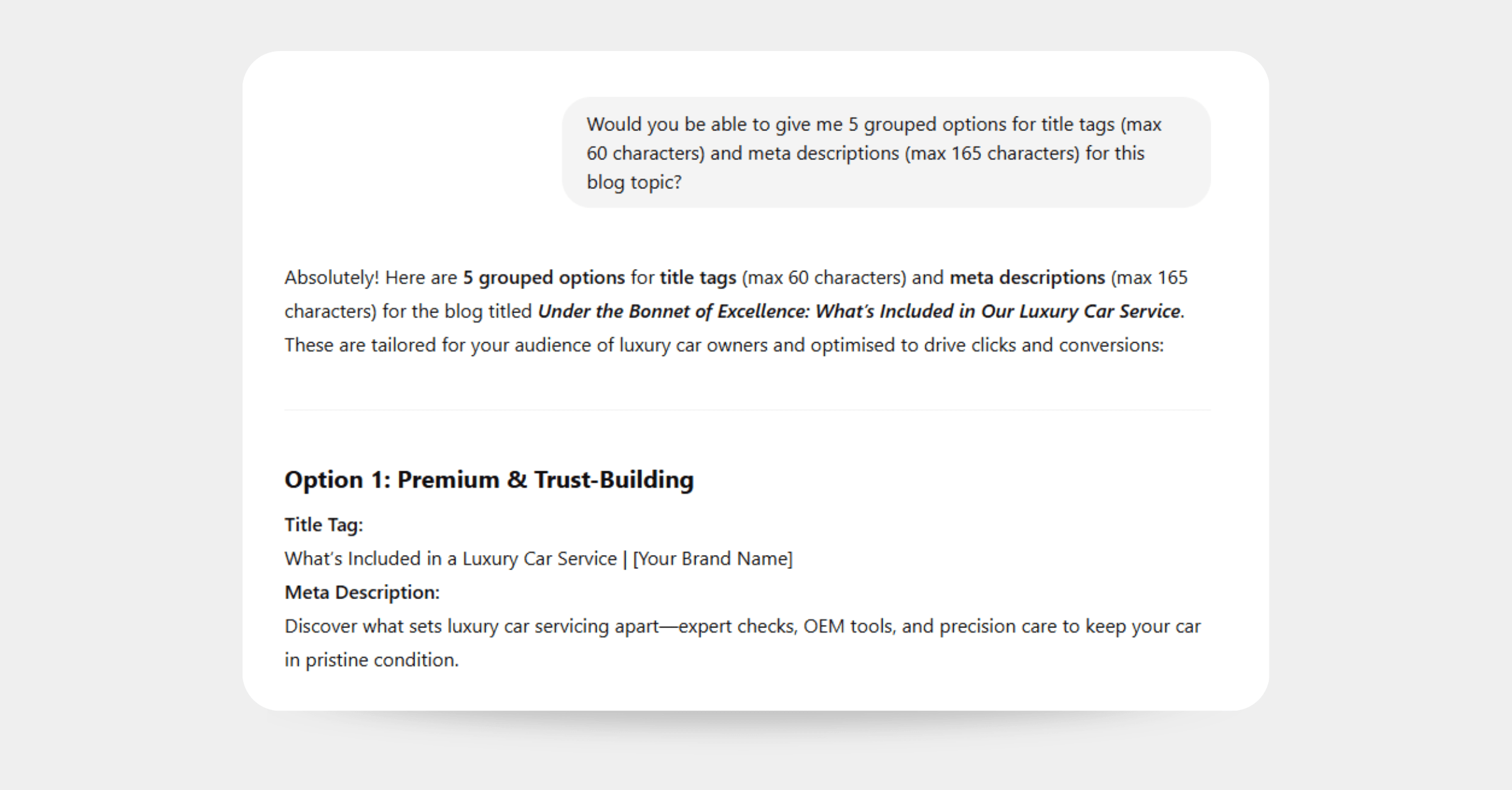
6. Generating Engaging Social Media Copy
When it’s time to share your content, ChatGPT can help you rework it for social media. Different social media platforms have best practices, which can be time-consuming when posting across several platforms. With the right prompt, ChatGPT can help create concise, engaging copy tailored to each platform, whether it’s a professional LinkedIn post or a snappy tweet.
Just try to remember who your audience is and what they expect from your brand. If ChatGPT spits out LinkedIn copy that sounds too salesy and not conversational, you’ll end up alienating readers.
7. Repurposing Content Across Formats
Similar to adjusting your content to fit social media posts, ChatGPT makes repurposing content for other marketing materials much more achievable. You can turn a blog post into a newsletter, a LinkedIn article, or even a business card.
Just prompt it with the original content and the format you want, and it’ll reshape the message for that context. This helps you get more mileage from every piece of content you produce, without starting from scratch each time.
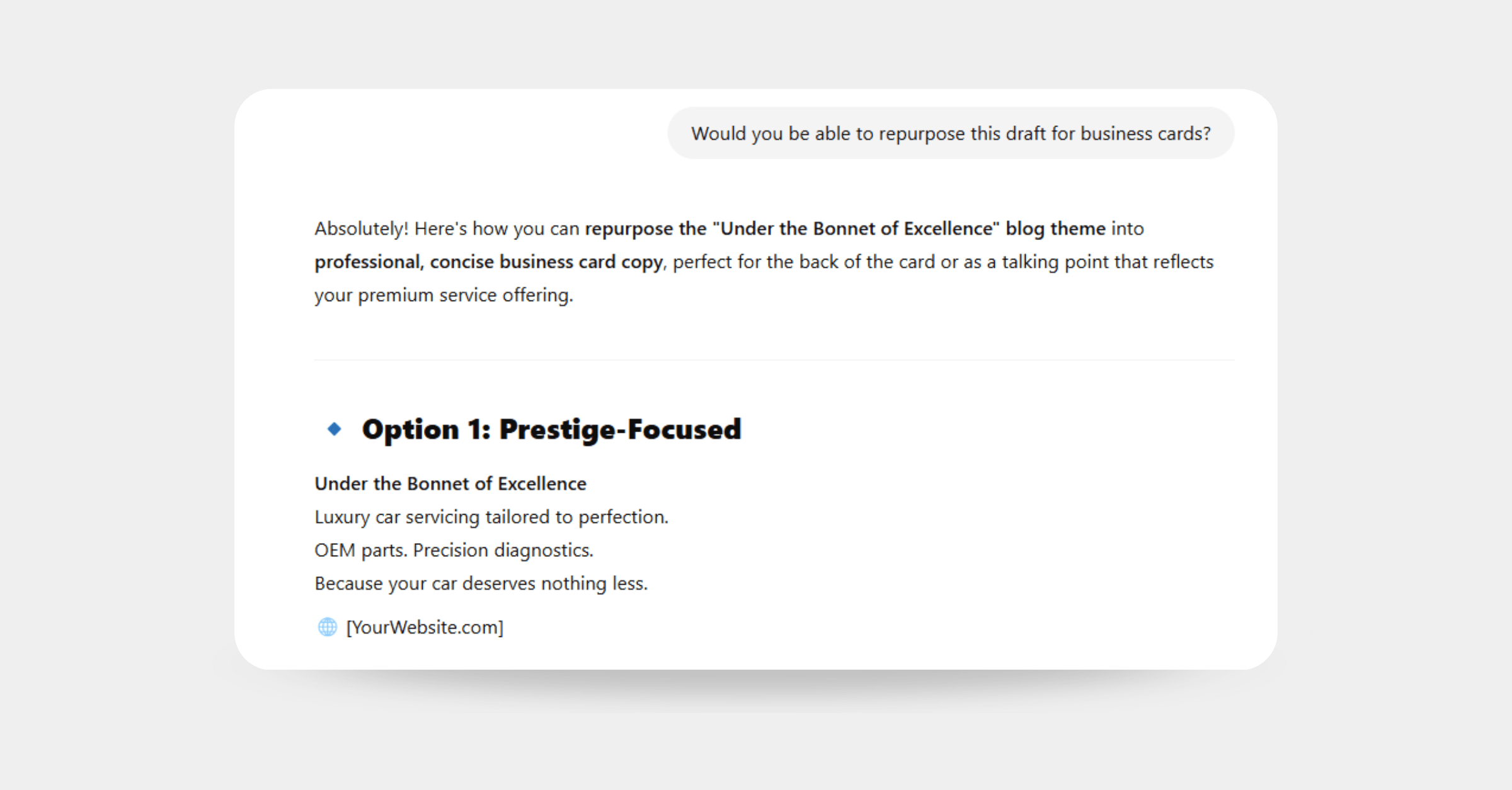
Avoiding Common Pitfalls with AI Writing
While ChatGPT is incredibly useful, it’s not perfect – and it’s not a substitute for good judgment. Here are some of the common pitfalls we’ve found using ChatGPT for content creation in our agency.
- It can strip personality.
- It can be redundant in long-form content.
- It can ignore instructions.
- It can hallucinate information.
- It can offer false, ‘empty’, or irrelevant citations.
- It defaults to US spelling and grammar.
- It overuses em dashes (—).
- It overuses certain words (ensure, crucial, landscape).
💡 Just a note on the last bullet point: be careful using a word exclusion list with your prompts. When writers make a concerted effort to avoid certain words, ChatGPT and other AI writing tools learn to mimic different commonly used words and phrases, therefore creating a new set of trigger words.
If you’re worried about including some of these trigger words, just think of your target audience. For instance, certain typical trigger words like ‘ensure’ or ‘landscape’ suit industries like medtech or law, so include them. It’s about using your best judgment and avoiding overreliance on AI.
Use AI as a Tool, Not a Shortcut
AI is everywhere now, including behind the scenes at many digital marketing agencies. And that’s fair enough, as long as it’s used in the right way. It can be tempting to churn out content with little to no human input, but that usually leads to low-quality, off-brand, generic stuff that doesn’t connect with people. And it definitely won’t do you any favours on Google.
If you’re curious about using AI the right way, we’re happy to help.
Get in touch to see how we can build AI into an ethical SEO strategy that actually delivers results.



